Ivy is a common wild plant that grows throughout many parts of the world. But is ivy poisonous to dogs, a lot of you might ask. While ivy may seem harmless, it can be quite dangerous for dogs.
The oil from ivy plants contains an irritating chemical called urushiol, which can cause an itchy, painful rash when it comes into contact with the skin. Dogs are especially at risk for ivy poisoning by brushing past the plants, chewing on leaves, or exposure to human skin or clothing. If not treated immediately, ivy rashes can lead to painful infections and other complications in dogs.
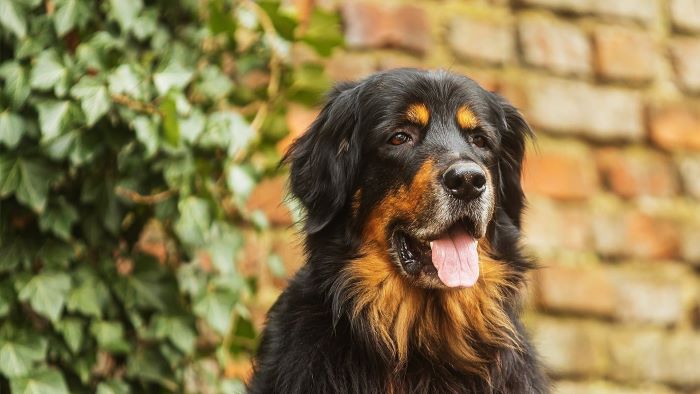
Types of Poisonous Ivy
Three main types of ivy contain urushiol and can cause a toxic reaction:
Poison Oak - This has lobed leaves that resemble oak leaves. It grows as a vine or shrub in Northern parts of North America. Poison Sumac - This woody shrub has smooth-edged leaflets in groups of 7-13. It grows in wet, swampy areas of North America. Poison Ivy - The most common irritating ivy has clusters of 3 leaflets. It can grow as a vine or shrub all over North America, Asia, and Europe.
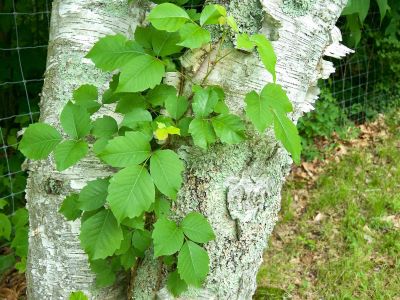
All three can cause identical skin reactions in dogs. Poison ivy is often considered the most problematic, given its widespread growth nationwide.
How Dogs Get Exposed to Ivy
There are several ways dogs can come into contact with the toxic oil from poison ivy plants:
- Brushing past ivy – Dogs running through areas where ivy grows can easily brush up against the plants and get the oil on their skin or fur. The oil can remain active on fur for months.
- Ivy oil on human skin/clothes – If the dog’s owner was exposed to ivy, the oil can transfer from human hands and clothes onto the dog. Grooming, petting, or snuggling with the dog can cause a reaction.
- Eating/chewing ivy plants – Dogs are likely to chew or eat foliage and vines if they come across ivy in wooded areas. Ingesting ivy leaves, stems, or berries exposes the dog’s mouth and digestive tract.
Repeated exposure increases a dog’s sensitivity and the risk of a more severe reaction. Even dried ivy residue in yards or on trails can be a hazard.
Symptoms of Ivy Poisoning in Dogs
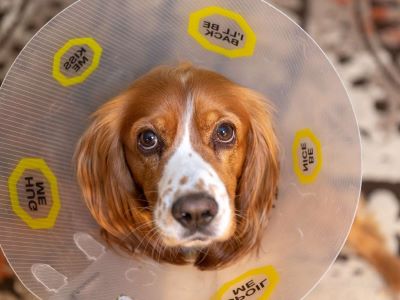
Some common symptoms of ivy poisoning in dogs include:
- Red, itchy skin – The affected area will become red, swollen, and itchy. The dog may lick, chew, rub, and scratch the irritated spots excessively.
- Hives, rash, or bumps – Small blisters, bumps, or raised welts can develop on the skin, along with rashes or hives. Oozing scores are possible if the area is scratched open.
- Swelling of face/muzzle – The eyes, lips, and muzzle often swell if the dog’s face brushes up against ivy. Excessive drooling and difficulty eating can occur.
- Vomiting, drooling – If the dog ingests ivy leaves or stems, this can cause vomiting, excessive drooling, and loss of appetite.
- Licking, scratching, rubbing – Dogs will compulsively lick, bite, scratch, chew, and rub at irritated spots, making symptoms worse. Hair loss and open wounds can result.
Seeking prompt treatment is vital, as symptoms usually worsen without medication. Severe cases left untreated can lead to eye damage, skin infections, and scarring.
Dangerous Effects of Ivy on Dogs

While mild exposure may just cause minor skin irritation, severe or chronic ivy poisoning can have dangerous effects:
- Pain and discomfort – The intense itching leads to pain, discomfort, and distress for dogs. They may seem agitated and unable to rest.
- Secondary skin infections – Bites, scratches, and open sore from excessive self-trauma can allow bacterial infections to develop.
- Eye irritation/swelling – Ivy oil exposure around the eyes causes redness, swelling, itching, and eye discharge. Vision can be temporarily impaired.
- Breathing difficulties – Significant facial swelling from oral ivy exposure may obstruct airways and make breathing more difficult.
- Anaphylactic shock – In rare cases, some dogs may develop anaphylaxis, a life-threatening allergic reaction involving severely low blood pressure, difficulty breathing, collapse and unconsciousness. This is an emergency requiring immediate vet treatment.
With aggressive treatment, most dogs fully recover from ivy poisoning within 1-3 weeks. However secondary infections may need longer-term medication.
Treatment Options for Ivy Poisoning
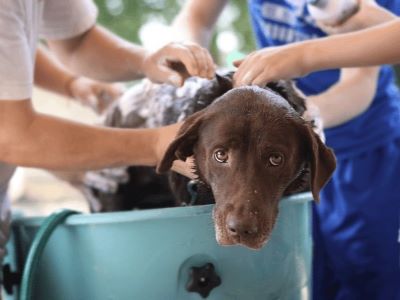
If your dog develops any ivy poisoning symptoms, contact your vet promptly. Treatment options may include:
- Antihistamines – Oral antihistamines like Benadryl help reduce itching and swelling. Dosage is based on weight.
- Steroid creams/medication – Topical hydrocortisone creams or oral steroids help decrease inflammation and provide relief.
- Antibiotics for infections – Antibiotics medication treats any secondary skin or eye infections caused by bacteria entering scratches or open sores.
- IV fluids for dehydration – If the dog is dehydrated from reduced eating/drinking due to severe swelling, IV fluids may be given.
- Corticosteroids for severe reactions – Injectable or IV corticosteroids quickly reduce swelling and urushiol absorption for acute, severe cases.
Prevention Tips
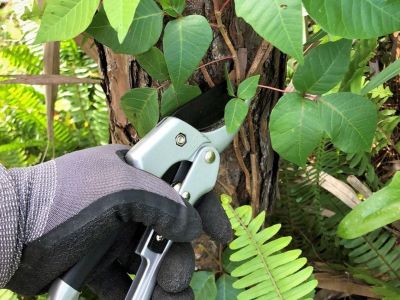
You can take proactive steps to help prevent ivy poisoning in your dog:
- Avoid areas with ivy plants – Learn to identify ivy and keep dogs away from known areas of growth on walks. Use on-leash control.
- Bathe dog after walks – If your dog may have brushed against ivy, bathing with soap and water can remove residual oil on fur.
- Check human clothes/skin for oil – Wash any clothing that may have touched ice to reduce the risk of transfer. Wash your hands and arms carefully after exposure.
- Learn to identify ivy plants – Knowing what poison ivy looks like in your area helps avoid accidental contact.
- Keep dogs on leash on walks – Monitoring dogs on trails and in woods prevents wandering into ivy patches.
When to See the Vet
You should seek prompt veterinary care if your dog shows:
- Severe itching/swelling – Especially if the face/eyes are swollen or breathing seems difficult.
- Vomiting/diarrhoea – This can signal the dog ingested ivy and is having a gastrointestinal reaction.
- Breathing problems – Laboured breathing, wheezing, or coughing merits emergency vet care.
- No improvement after 3-5 days – If symptoms persist beyond 3-5 days of home treatment, a veterinary exam and medication may be needed. Extended irritation risks secondary infections.
- Signs of infection – If rashes ooze pus, red streaks appear on the skin, or the dog develops fever, a skin infection may be developing. This requires antibiotics.
- Loss of appetite/lethargy – If the dog seems extremely lethargic and refuses food or water due to nausea, dehydration is likely. The dog may need IV fluid support.
Don’t wait too long to call the vet, as delayed treatment can allow the reaction to get much worse. Catching ivy poisoning early vastly improves recovery time and prevents complications like infections, dehydration, and eye damage.
FAQs
Is ivy poisonous to dogs?
Yes, eating ivy leaves, stems or berries can be very dangerous for dogs. The toxins can cause excessive drooling, vomiting and gastrointestinal upset. Swelling in the throat and airways could also occur after oral exposure.
How long does ivy poisoning last in dogs?
What prompt treatment, skin irritation usually resolves within 1-3 weeks. However, if secondary infections develop, antibiotic treatment may be needed for several more weeks. For mild cases with no complications, symptoms typically improve within 5-10 days.
Can I use cortisone cream on my dog for ivy rash?
Do not use any human over-the-counter creams on your dog without consulting your vet first. Some ingredients may be unsafe. Your vet can recommend a topical hydrocortisone cream formulated
How do I know if my dog needs a steroid shot for ivy poisoning?
Severe swelling, especially on the face and around the eyes, often merits an injectable steroid shot to provide faster relief. Difficulty breathing due to blocked airways also warrants emergency vet care for steroid treatment. If symptoms do not improve after a few days of home treatment, steroids may be prescribed.
Can my other pets get ivy poisoning too?
Yes, ivy toxins can also cause skin irritation in cats and other pets. Keep all pets away from known ivy growth areas. Check their skin and fur potential exposure. Seek treatment if any symptoms develop. Cats tend to groom ivy oil off their coats, so may ingest the toxin and require veterinary care.
Conclusion
Ivy exposure can certainly cause misery for dogs. However, by learning to identify poisonous ivy plants, keeping your dog leashed in hazardous areas, and washing off any oil after contact, you can lower the risks significantly. Check your clothing and skin after hiking or yard work to avoid transferring oil onto your pup.
If skin irritation does develop, get prompt veterinary attention to keep your dog comfortable and prevent lasting damage. With vigilance and proper treatment, most dogs make a full recovery and avoid any long-term effects of ivy poisoning.
References:



